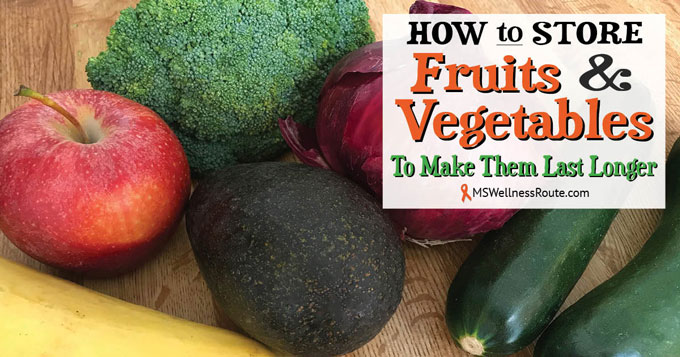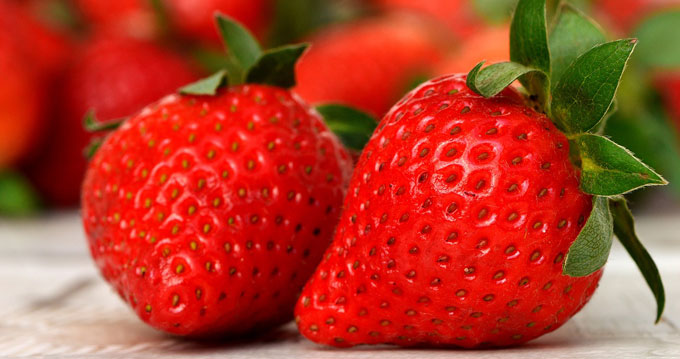Last Updated on December 5, 2023 by Cathy

One thing I love about summer is all the fresh fruits and vegetables that are available. They taste better and they cost less, especially if you’re growing them in your garden. The only problem is how do you store them before they go bad. If you’re like me, I hate throwing away food. It’s a waste of money and eating healthy is expensive enough. Fortunately, I’ve discovered better ways of storing produce to make them last longer.
Not all fruits and vegetables are stored the same way. Notice how your local grocery store displays them. Some are stored on a dry shelf, some are sprayed with water, and some are stored in the cooler section. You can get a complete list at the bottom of this post.
It’s best to shop a couple of times a week. This way you can get the freshest produce available and they won’t go bad. But there are times when a certain item is at a really good sale price so you want to buy a little extra. This happened to me this past week when avocados were on sale at half price, so I stocked up.
Pantry
Keep produce like sweet potatoes, yams, onions, and garlic in a cool dry place. Don’t store them in your refrigerator since the cold will ruin their flavor. Citrus fruits can also be stored in a dark cool place for up to a week but they’ll last longer in the refrigerator.
Unripe fruit like avocados, bananas, melons, tomatoes, or pears can be stored on the counter. But, as soon as they start to ripen move them to the refrigerator just don’t forget about them. You can find a more complete list at the bottom of this post.
Refrigerator
As some fruits and vegetables ripen they produce a gas called ethylene. If you store all your produce together this gas can ripen foods faster that are sensitive to this gas. It’s best to keep these groups of foods away from the others.
Ethylene producing fruit:
• Apples
• Apricots
• Avocados
• Bananas
• Cantaloupes
• Kiwis
• Mangoes
• Melons
• Nectarines
• Papayas
• Peaches
• Pears
• Plums
• Tomatoes
Produce such as broccoli, carrots, or dark leafy greens start to spoil as soon as they’re picked. Keep them in separate bags and store them in the bottom crisper of the refrigerator. Don’t wash these or berries before putting them in your refrigerator or they will spoil faster or get moldy.
If you like to wash, dry, and cut produce first, place a paper towel at the bottom of a glass jar then add the produce. This makes it easy to see what’s inside and keeps moisture out. Asparagus, on the other hand, needs water on the bottom of the jar, then lightly cover it so it can breathe.
Pineapples last longer and taste sweeter if you cut the green top off. Then store the pineapple upside down in the refrigerator. This allows the juice to flow back through the pineapple which settles to the bottom. Make sure it’s in a bowl to catch the juices from flowing out and making a mess.

Produce you can freeze
It’s easy to get loaded up with your favorite produce during the summer. Instead of letting them end up in your compost pile, freeze them! Saving them for the winter months is perfect since that’s when they’re usually expensive. Freezing also preserves its flavor and nutritional value.
Each fruit or vegetable has a different requirement for freezing. You can freeze lemon wedges, onions, pineapples, and just about any produce. But, fruit like apples, avocados, and pears need to be treated to prevent browning. Peel (if necessary) and pit the fruit, cut into desired sizes, and coat with lemon or lime juice. It’s best to squeeze fresh lemon juice, I use this juicer: BLACK+DECKER 32oz Citrus Juicer.
Label each bag with the date and how many are in each bag. I like to add 2 to each baggie since there are two of us. Place the fruits or vegetables in a plastic storage bag and squeeze out as much air as possible. If you have a food saver system you can get all the air out. I was lucky because my husband bought me one as a gift many years ago.
Freezing berries is simple. Place the berries in a freezer bag or glass container and freeze the whole berry. Frozen grapes make a nice treat any time of year.
Make ahead smoothies
- Chop each food item into cubes. Lay the fruit out on a baking sheet lined with parchment paper and freeze for 3-4 hours.
- Prepare your baggies or BPA free containers by labeling them. For example Blueberry-Banana-Avocado-Spinach. Mark what’s in the bag/container and date it for later reference.
- Once frozen, measure out your fruit and add enough for one smoothie to each bag/container. Then add dark leafy greens such as spinach, kale, or chard.
- Seal the bags/containers and place them in the freezer.
- When you’re ready to make your smoothie add coconut milk or almond milk.
Play around with different fruits and vegetables until you find your favorite smoothie. One of my favorites is Easy Power Green Smoothie. My husband likes more fruit so I also mark our initials on each baggie.
Plan Ahead
It’s best to plan ahead and only buy what you will need. I know that means you’ll probably have to go shopping a little more often. But, you’ll get the freshest produce with them going bad too quickly.
If you notice any fruits or vegetables starting to go bad remove them before it starts to spoil the rest. Don’t let “one rotten apple spoils the barrel.”
How to Store Fruits and Vegetables
Get the password for the library with the proper way to Store Fruits and Vegetables here by filling out this form:
How To Store Fruits And Vegetables
Get the password for the library with the proper way to Store Fruits and Vegetables here by filling out this form:






